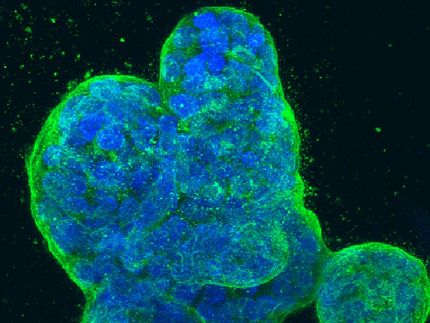Targeting breast cancer metabolism to fight the disease
Advertisement
How does a cancer cell burn calories? New research from Thomas Jefferson University shows that breast cancer cells rely on a different process for turning fuel into energy than normal cells.
"Our finding is part of a growing interest in studying the metabolic function of cancer," says Ubaldo Martinez-Outschoorn, M.D., Assistant Professor in the Department of Medical Oncology at Thomas Jefferson University and researcher at the Sidney Kimmel Cancer Center at Jefferson . "The better we understand how cancers thrive, the better we'll be able to cut off the energy supply they need for survival."
Dr. Martinez-Outschoorn and colleagues looked at a protein that they knew changed the metabolism of breast cancer cells. The protein TIGAR (short for TP53 inducible glycolysis and apoptosis regulator) diminished the cell's ability to create energy via the most common biochemical pathway -- converting sugar to energy via glycolysis. But it was unclear how this change in metabolism altered the cancer cell, or how the cell was getting the energy it needed to survive.
Through a series of cellular and mouse studies, the researchers demonstrated that breast cancer cells with a higher-than-normal abundance of the TIGAR protein were more aggressive and were able to grow faster than breast cancer cells that had normal amounts of TIGAR. But if the cells weren't using glycolysis to drive this growth, what were they using?
Dr. Martinez-Outschoorn and colleagues showed that when cells expressed TIGAR, they swap their metabolic pathway and become dependent on mitochondria for energy production. Interestingly, the high levels of TIGAR produced by cancer cells also changed the metabolism of the cells that surround and support breast cancer, but with the opposite metabolic effect. Rather than increase their dependence on mitochondrial energy production, TIGAR made these supporting cells dependent on glycolysis and increased tumor growth. Previous studies had shown that glycolytic supporting cells in tumors make breast cancer more aggressive.
"The fact that 70-80 percent of breast cancers show high levels of TIGAR presents an opportunity," says Dr. Martinez-Outschoorn. "There are already a number of therapies that block mitochondrial metabolism that we could use to try to 'starve' breast cancer cells."
Two drugs approved for other indications -- metformin, an antidiabetes therapy and doxycycline, an antibiotic -- are known to also block mitochondrial metabolism. When the researchers used these drugs to block mitochondrial metabolism in high-TIGAR-expressing breast cancer cells, they saw a reduction in the cancer's aggressive properties.
"Because these drugs are already approved, they have passed safety testing in humans. If they indeed help reduce tumor growth in patients, as our preliminary studies suggest, these drugs could be available to patients as a combination treatment with other drugs much sooner than new therapies," says Martinez-Outschoorn.
To that end, Dr. Martinez-Outschoorn is collaborating with Jennifer Johnson, M.D., Ph.D., Assistant Professor of Medical Oncology and Adam Berger, M.D., Professor of Surgery at Jefferson on a clinical trial that will test the effect of metformin and doxycycline on breast cancers in women prior to surgery. The study will collect and analyze the tumors of patients to see if these drugs that inhibit mitochondrial metabolism might have an effect on tumor biology.
Original publication
Ying-Hui Ko, Marina Domingo-Vidal, Megan Roche, Zhao Lin, Diana Whitaker-Menezes, Erin Seifert, Claudia Capparelli, Madalina Tuluc, Ruth C. Birbe, Patrick Tassone, Joseph M Curry, Aurea Navarro-Sabate, Anna Manzano, Ramon Bartrons, Jaime Caro, and Ubaldo Martinez-Outschoorn; "TIGAR Metabolically Reprograms Carcinoma and Stromal Cells in Breast Cancer"; J. Biol. Chem.; 2016

















































